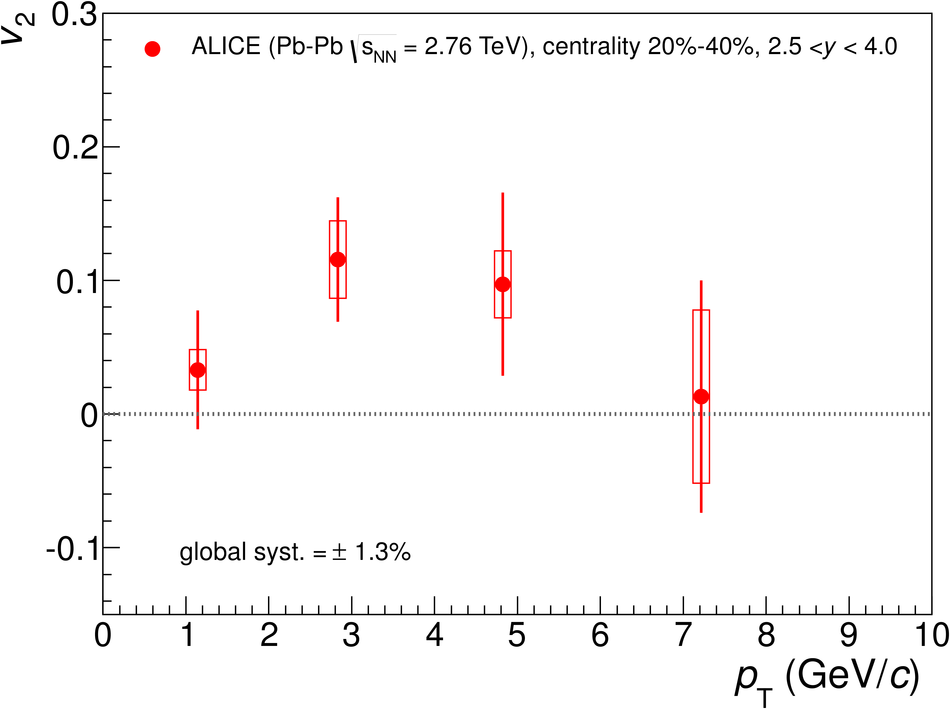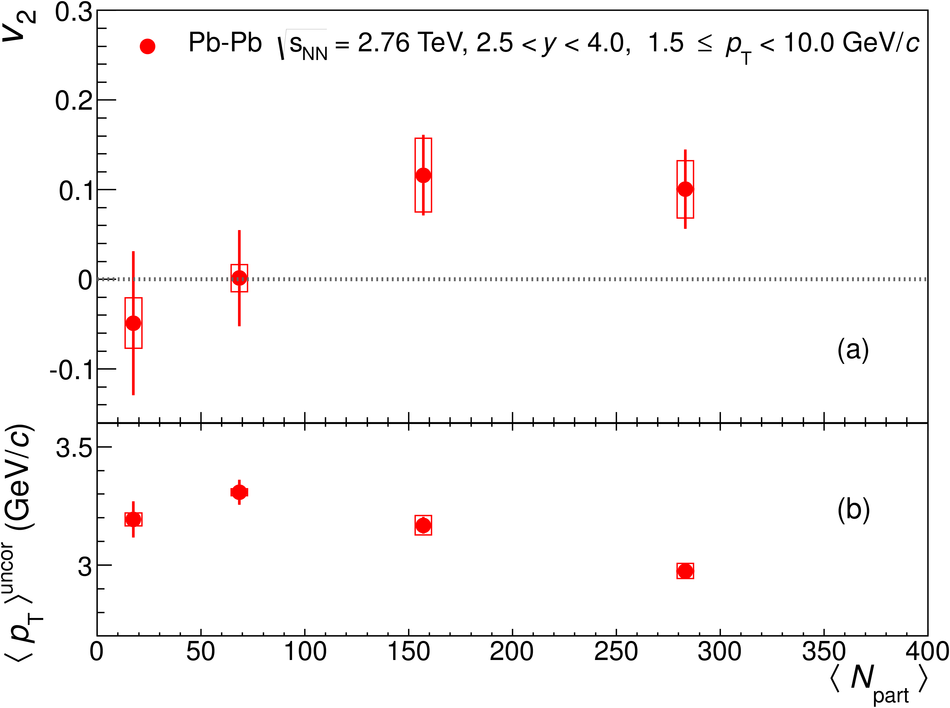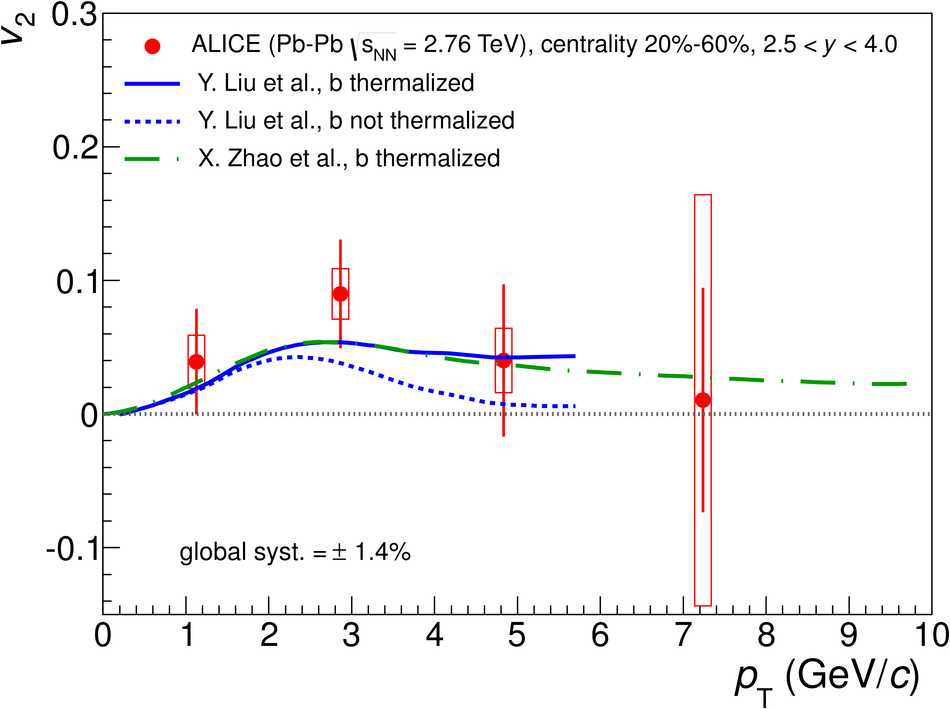We report on the first measurement of inclusive J/$\psi$ elliptic flow, $v_2$, in heavy-ion collisions at the LHC. The measurement is performed with the ALICE detector in Pb-Pb collisions at $\sqrt{s_{\rm NN}} = 2.76$ TeV in the rapidity range $2.5 < y < 4.0$. The dependence of the J/$\psi$ $v_2$ on the collision centrality and on the J/$\psi$ transverse momentum is studied in the range $0 < p_{\rm T} < 10$ GeV/$c$. For semi-central Pb-Pb collisions at $\sqrt{s_{\rm NN}} = 2.76$ TeV, an indication of non-zero $v_2$ is observed with a maximum value of $v_2 = 0.116 \pm 0.046 {\rm (stat.)} \pm 0.029 {\rm (syst.)}$ for J/$\psi$ in the transverse momentum range $2 < p_{\rm T} < 4$ GeV/$c$. The elliptic flow measurement complements the previously reported ALICE results on the inclusive J/$\psi$ nuclear modification factor and favors the scenario of a significant fraction of J/$\psi$ production from charm quarks in a deconfined partonic phase.
Phys. Rev. Lett. 111 (2013) 162301
HEP Data
e-Print: arXiv:1303.5880 | PDF | inSPIRE
CERN-PH-EP-2013-042




